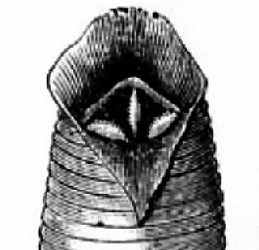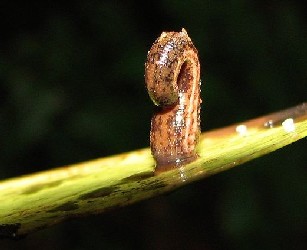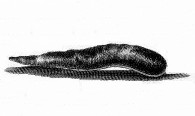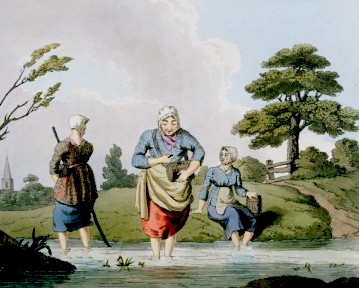
Leeches in Medicine Page Selection Menu: 1 2 3 4 5 Next>>
Leeches in Medicine During the Golden Age of Piracy, Page 1

Mission performing dentistry on Lisa Dousharm,
Jessica Bagley assisting. "Reach for a leech!"
"We frequently apply Leaches to the Parts which cannot bear either Bleeding or Scarifications... Leaches supply the Place of Bleeding, their Sting or sharp pointed Needle performing the Office of the Lancet." -Pierre Dionis, A course of chirurgical operations: demonstrated in the royal garden at Paris. 2nd ed., p. 476
As surgeon Dionis informs us, leeches were used for bleeding a patient when a lancet or scarifier would not suffice - such as in dental and other delicate procedures. Their use in medicine has a long pedigree that extends right up to the present day. How does this tie in with the surgeons active during the golden age of piracy? When the pirates needed bleeding, did period surgeons reach for a leach?1
1 This responsibility for this horrible sing-song rhyme falls entirely upon the shoulders of fellow reenactors Jessica Bagley and Lisa Dousharm, both of whom seemed to think it's really funny when they came up with it.
A Bit About Leeches

The leech's anterior feeder taken from
Meyers Konversationslexikon von 1888
Many leeches do not actually feed on blood; they eat small invertebrates. Of the leeches that do feed on blood, 90% get it solely from decomposing bodies and open wounds on live animals.1 Those that do feed on blood drink it rather than sucking it out as popular notions often suggest. Leeches do have suckers that allow them to latch on to their host and stay fixed there so that they can feed, but this process has nothing to do with their taking in of blood.
Once attached they release an anesthetic to prevent the host from feeling them. The leech has three 'blades' in its mouth (as seen in the image at left) which contain hundreds of teeth2 that are used to slice through the host's skin once the leech is firmly attached and the anesthesia released. These teeth leave a Y-shaped incision in the skin.
The leech then releases a anticoagulant peculiar to the medicinal leech called 'hirudin' into the host's blood stream.3 The properties of hirudin often causes leech bites to bleed more than a typical wound once the leech has been removed, although its effects wear off in a few hours. "Bleeding time will vary, with location, from a few hours to three days."4

A leech 'dancing', photo by thejawsi, Bangalore, India
A leech "drinks about 5ml of blood (a teaspoon) on average, and takes from 20 minutes to an hour to do so."5 Some blood-sucking leeches can drink up to five times their body mass.6 Once a leech has finished feeding on the host, the leech falls off to digest the blood it has drunk, going "into a coma-like sleep for a week or two."7 The medicinal leech can then go for about 6 months before it needs to feed again. The is due to the fact that the digestive process of a leech is quite slow.
Leeches can move like a caterpillar, using suckers located at either end of their bodies. They also stand on one end in an effort to explore their environment and to search their surroundings for potential prey. They can move their head as well, allowing them to better attach to their hosts.
1 'Leech', wikipedia, gathered 5/13/12; 2 Rory W. McCreadie, The Barber Surgeon's Mate of the 16th and 17th Century, p. 58; 3 'Hirudin', wikipedia, gathered 5/13/12; 4 'Leech'; 5 McCreadie, p. 58; 6'Leech'; 7 McCreadie, p. 58
Leeches in Medicine
"There are records of leeches being used by the ancient Indians, Greeks and Romans. Leech use was at its height from the mid 16th century until the late 18th, peaking between 1820-1850…" (Rory W. McCreadie, The Barber Surgeon's Mate of the 16th and 17th Century, p. 57)
Bloodletting has a long and ancient pedigree, dating back as far as recorded medical history. Being naturally skilled at this task, leeches also have a long association with medicine, as the earliest surgeons no doubt saw the use of leeches as tools for bleeding patients. The use of the leech as a facilitator of bloodletting is detailed in ancient Ayurvedic texts.1

A medical leech taken from Lorenz
Heister's "A General System of
Surgery", p332 (1743)
Many of the classical surgical authors (who were still relied upon for advice by the more 'modern' surgeons during the golden age of piracy) advised the use of leeches. Lucius Annaeus Seneca tells us that Thermisos wrote about the usefulness of the Leech in medicine. He would place a leach on the patient and let it drink it's fill. When it fell off, Thermisos applied a cupping-glass to the wound to gather more blood.2 From Pliny, we learn that leeches were helpful in cases of Gout when placed on the "hæmorrhoidal veins."3 (Pliny also disclosed that "the ashes of a burnt Leech, sprinkled over or formed into the a kind of paste, with vinegar, will remove hair from any part of the body to which it is applied."4) Paulus Æginetus suggested in the 7th century that leeches be applied to the occiput of the shaved head to cure fevers.5 In the 15th century, Petrus Salius [Diversi] further explains that leeches were useful for removing the humours created by such fevers.

The Leech Finders, from an engraving by Robert Havell after
a drawing by George Walker (1814)
The preferred leech used by many English surgeons was the European or Medical Leech. This type of leech was found all around Europe until the end of the 18th century when their popularity in medicine caused them to be over-harvested, creating a shortage. "The main leach gathering centres from Britain were Glastonbury, Kenfig in Glamorganshire, the Lake District and Yorkshire."6 The creatures were usually gathered by women who would wade through shallow waters with their skirts gathered up so that leeches could glom on to their legs. According the description of an 1814 engraving made by R. Havell based on the drawing by George Walker called The Leech Finders, "…the women who collect them… promenade bare legged with considerable picturesque effect in the pools frequented by leeches. Those little blood suckers attach themselves to the feet and legs and are transferred by fair fingers of the lady to a small barrel or keg of water suspended at her waist."7 And here I'll bet you thought parts of your job were horrible!
1 'Leech', wikipedia, gathered 5/13/12; 2 James Rawlins Johnson, A Treatise on the Medicinal Leech, London, p. 2-3; 3 Ibid., p. 4; 4 Ibid., p. 4-5; 5 Ibid., p. 6-7; 6 Rory W. McCreadie, The Barber Surgeon's Mate of the 16th and 17th Century, p. 57; 7 Ibid.

